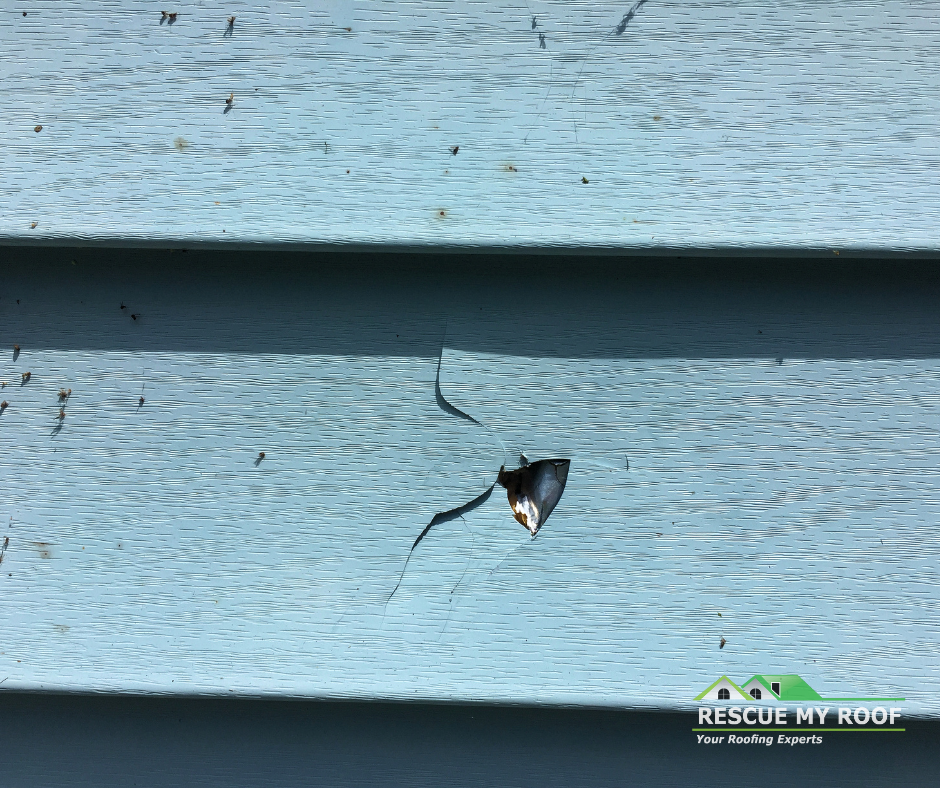Top 5 Problems with Vinyl Siding
Replacing your siding is already a stressful project. It can seem overwhelming when you factor in all the decisions you have to make.
One of the most important decisions you’ll face in the siding process is what material you want. There are many options – vinyl, wood, and hundreds of colors. So how do you choose just one?
Rescue My Roof understands how stressful siding replacements can be. That’s why we’ve spent over a decade in the roofing industry, guiding homeowners like you through the process.
One of the most popular siding materials in the U.S. is vinyl siding. It’s durable, comes in various colors, and is inexpensive. However, it does have its faults.
If you’re considering vinyl, here are some issues you should know about before purchasing.
5 Problems with Vinyl Siding
Before investing in any shingle options, you should know about the risks.
Here are the five most common issues homeowners run into with vinyl siding.
1.Sustainability
Sustainability and environmentally-friendly options are essential to homeowners today. But if you want to ensure that whatever you put in or on your home will be good for the environment, there may be better choices than vinyl siding.
While some vinyl siding manufacturers use recycled materials, most vinyl siding is not considered green or sustainable.
Additionally, if you ever need to replace your siding, very few places recycle used vinyl siding. As a result, the plastic will end up in a landfill.
Check out wood or vinyl siding if you want a more sustainable siding option.
2. Warping
Vinyl siding doesn’t peel or chip, but it can warp in hot temperatures.
If you live in a warm climate, vinyl siding can warp or change shape over time. And while you can replace warped areas, the same issue will happen until you install shade for your home.
Warping is an issue in desert areas where trees and other cover grow poorly, and high temps can melt your siding. However, even reflected light from a neighbor’s window can cause the siding to warp with constant exposure.
There are alternative siding options for homes at a high risk of warped siding. Check out other siding options, like metal siding, to find the best fit for your home.
3. Cracking

Unfortunately, vinyl siding faces issues in cold climates, too.
When vinyl gets cold enough, any impact against it may cause it to fracture or crack. Additionally, even in mild temps, high-speed impacts (like a hail strike or rogue football) can cause the siding to crack.
Once the siding is cracked, it allows moisture to seep through the siding, leading to issues such as wood rot, mold, and mildew beneath the siding.
If left untreated, moisture damage can result in costly repairs. If you notice any cracks in your siding, call a professional for repairs ASAP.
4. Unwanted Moisture
Vinyl siding is water resistant. However, if installed with a foam backing, it can trap moisture behind the siding. This doesn’t impact the siding but will cause mold, mildew, and rot.
These issues are impossible to spot hidden behind the siding. The best way to avoid unwanted moisture damage is to install siding without backing or to use water-resistant materials.
5. Color Fading

When exposed to sunlight, over time, the siding will fade.
What once was a vibrant color can turn dull, negatively impacting your home’s curb appeal. Additionally, constant exposure to sunlight can reduce your siding’s lifespan by 25 percent.
Unless your home is in constant shade, there’s no effective way to avoid the sun and faded siding. However, there are fade-resistant siding options available. If you live in a sunny area, it could be a better investment for you.
Minimizing Vinyl Siding Problems
While warping, cracking, fading, and unwanted moisture can affect vinyl siding, many homeowners install vinyl siding with minimal issues.
The biggest factor in vinyl siding’s effectiveness is finding a reputable contractor. Many siding issues can be avoided with proper installation.
Want to learn more about siding? Read “What is LP Siding? Pricing, Pros, and More” and “5 Wood Siding Styles.”
Are you looking for a reputable vinyl siding contractor in Southeastern Wisconsin? Rescue My Roof is the contractor for you. Contact us today to get a free estimate.


